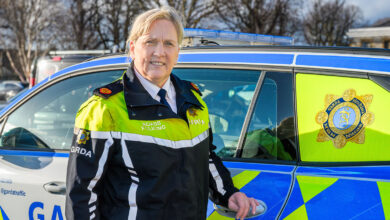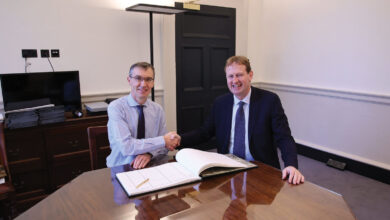Body worn cameras: Proving the concept
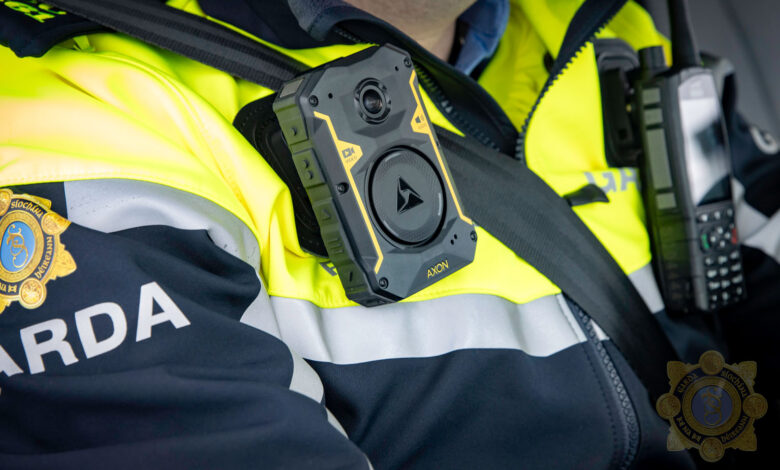
In May 2024 An Garda Síochána launched the first of three phased introductions of body worn cameras (BWCs) at five Garda stations nationwide.
An amendment to existing legislation will be required to provide the basis for processing digital video evidence at the scale required for the full national rollout of BWCs. Preparing for this, An Garda Síochána looks ahead to the next phase of the project, to procure and implement a national Digital Evidence Management system followed by a tender for a national roll-out of Body Worn Cameras. In anticipation of this, those using the cameras explain the benefits of the technology and how they are finding it a useful and valued tool.
The proof of concept is now running in Store Street, Kevin Street and Pearse Street Stations in the Dublin Metropolitan Region; Henry Street in Limerick City; and Waterford Garda Station. Each division has been issued a different camera type along with an accompanying digital evidence management system.
The proof of concept was designed to understand the technical aspects of each camera and backend digital evidence system, how BWCs will be used operationally in addition to the training, Code of Practice, the digital evidence journey and governance in use of the camera in everyday policing.
When complete, the three-phased pilot will inform a procurement process for the introduction of body worn cameras in Garda Stations nationwide.
Since the first of these three phased introductions commenced in Dublin on 31 May 2024, 750 trained gardaí have been trialling their use in a variety of policing settings.
According to users, they are proving their worth with a wide range of benefits being experienced. As well as capturing important evidence, the cameras are showing themselves to be a valuable tool in keeping the public safe, and are now considered a vital part of the Garda’s personal protective equipment.
In Limerick City, gardaí attached to Henry Street Garda Station are using Reveal cameras – these are the only camera in the proof of concept to have a video screen on the face of them.
When activated this displays what the cameras is capturing in front of them when recording. The effect of this means when the Garda turns on the camera, the person they are engaging with can see themselves displayed on screen.
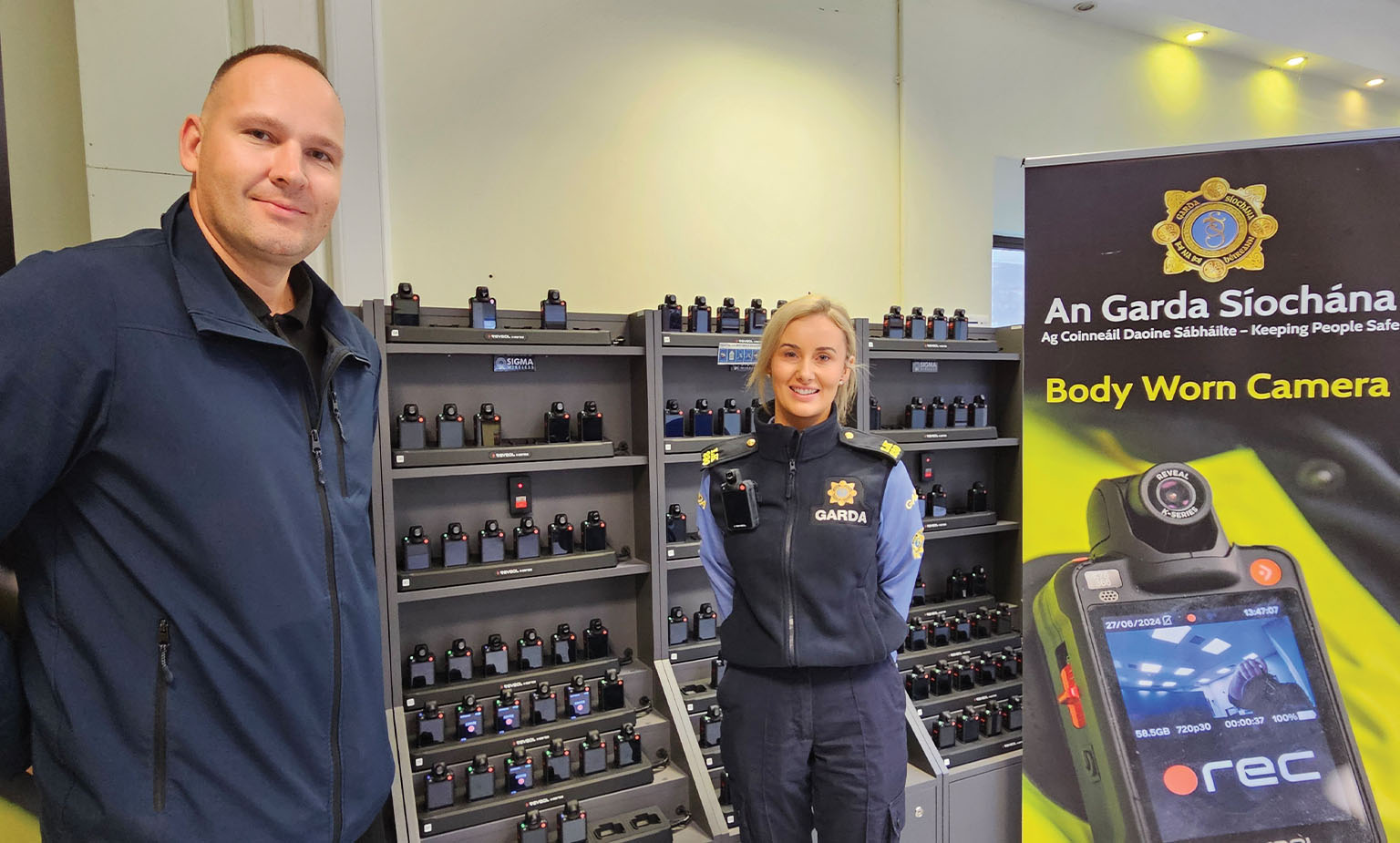
As noted by Chief Superintendent Derek Smart of the Limerick Garda Division this, coupled with the warning that recording is in progress, has resulted in the quick de-escalation of incidents.
“What is different to how we operated before is that now we have a witness with us. So when I go out on the beat now I go and get the camera. It contributes to our safety one hundred percent. What we tend to find is things deescalate quickly and in situations where I feel there is a risk to the public or myself I can put it on, and it is there as a witness.”
A very useful feature of all the cameras is they have a 30 second buffer. This means once recording begins the footage captures the previous 30 seconds.
Chief Superintendent Smart says: “As you are interacting with someone, aggression can start from the beginning, you might try yourself to de-escalate and if that doesn’t work you can turn it on and then it captures what happened previously and you then have a record of the whole interaction”.
Of course, this is not always going to be the outcome and there will be some individuals who continue to flout the law irrespective of the presence of the BWC.
This was the experience of Garda Emily Maher, a member of the Community Policing Unit in Henry Street, when on August 15 2024 – just two weeks into the proof of concept – she encountered an unruly man while on duty in Limerick city.
“Just two weeks after the launch here in Limerick, I was on Thomas Street, a highly populated area in Limerick city during the day with a Garda Trainee. We were just talking with a member of the public, when a male came up to us. He was highly abusive with us from the get-go. We had had no interaction with him prior to this, he just approached us and began calling us every name under the sun. I then asked him to leave the area a lot of times, as there were so many people around,” Garda Maher says.
When she tried to de-escalate the situation, Garda Maher felt the man was posing a risk, so she informed him she was going to turn on the camera.
“He did not seem to mind, and he was asked to leave but he would not. Then I went to leave with the Garda trainee and he actually followed us and began walking in front of us. I felt that was intimidating and a lot of the public had stopped and were looking. He continued to be abusive. I had turned the camera on because there was a risk to safety, either to ourselves or the public on the street,” she says.
When the man continued to ignore the direction to leave the area and continued to be abusive, Garda Maher made the decision to arrest him, and called for additional units to help. He was arrested and appeared in court the following day. The body worn camera footage formed part of the evidence against him, and resulted in a guilty plea and a sentence of three months being imposed. The defendant filed an appeal but when it came to the appeal court he learned the footage would be brought as evidence, and withdrew the appeal.
This was the first conviction in Limerick involving BWC footage.
Each recorded piece of footage is categorised by members as evidential or non-evidential. In the Reveal cameras this can be done on the camera itself, which reduces workload, another bonus. The footage is saved for 31 days if deemed non-evidential but retained for longer depending on the evidential category used by the member.
It is important to note that despite over 4,000 recordings being deemed as evidential – which means they contain footage in support of a crime having occurred – An Garda Síochána has to date, not been required to show this footage in court.
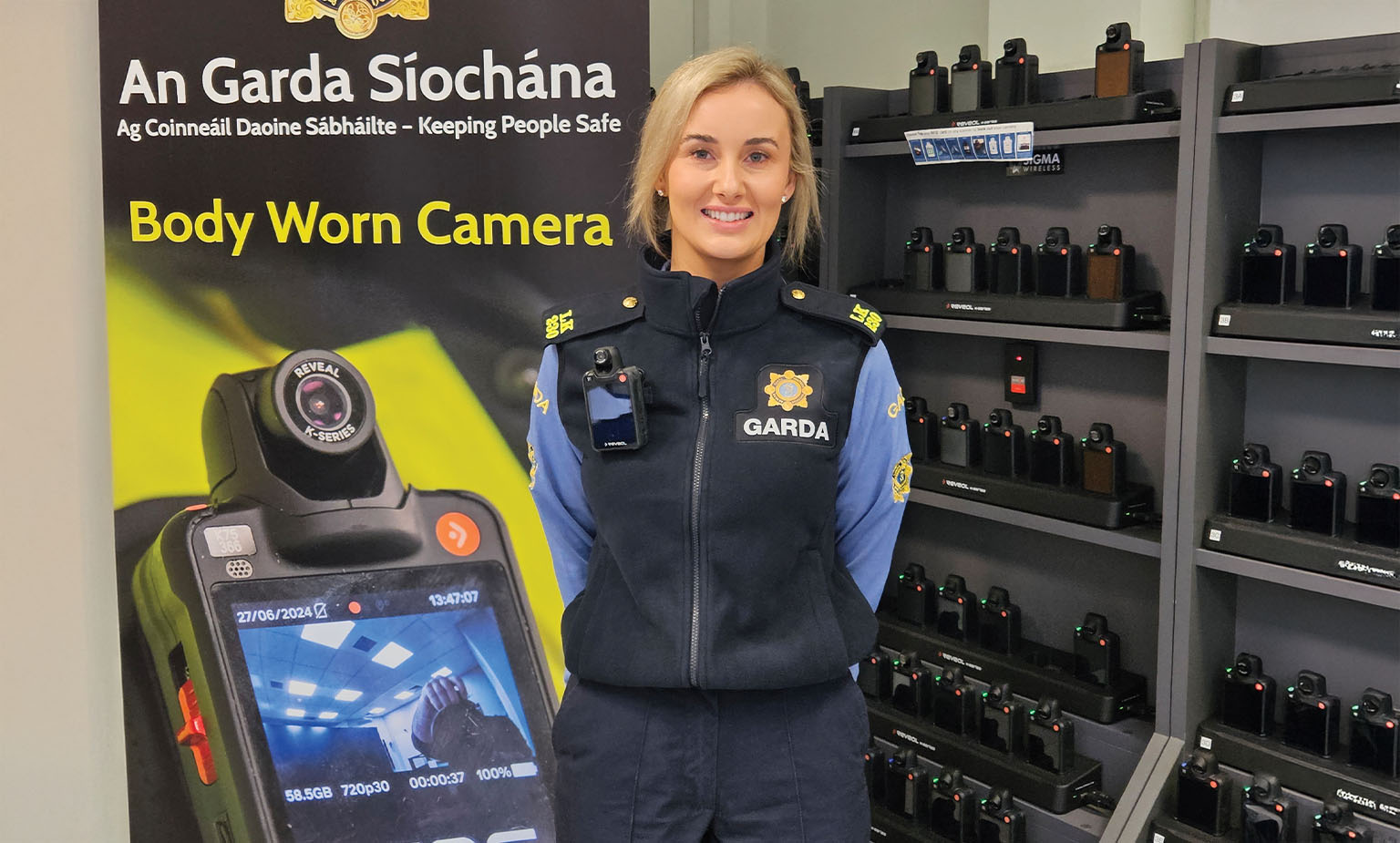
Initial feedback indicates that the existence of the footage in cases pursued by An Garda Síochána is resulting in admissions of guilt, thereby negating the need to prove the case in court.
“In every case where we have had with the footage available the defendants involved have pleaded guilty. We have briefed all the solicitors and judges here in Limerick and we will be briefing the Law Society soon. We are not getting any negative feedback. Some have raised a concern around facial recognition but this is not something that is used with the BWCs,” Chief Superintendent Smart says.
Asked if they were to go back to a position where they were to be without the cameras, Chief Superintendent Smart says: “It is certainly part of our PPE now, and that’s one of the reasons why I would not like to give it up. It is also fantastic to capture a scene when we arrive. In incidents of child neglect for instance, it allows for a good visual on how a situation looks when we arrive. This serves to support the interventions required in those instances.”
Meanwhile in Waterford Garda Station, where Motorola Solutions Body Worn Cameras are part of the PoC, gardaí attached to plain clothes detective duties are also trailing BWCs. Here, Detective Inspector Donall Donoghue says they are so effective that he cannot see a situation where his team would be without them.
“At the beginning the uptake was somewhat slow, but now we are way more confident in using them, and I know our team would not go back.
“It has really helped in respect of drugs searches we conduct. We can see very clearly why we were suspicious in the lead up to a search. The camera captures the search, and what is found or not found. The 30 second buffer also often captures evidence of items being discarded ahead of a search of a person or car, which is another support to us in proving cases,” Detective Inspector Donoghue says.
Ahead of a national rollout, the Detective Inspector had these words of advice for gardaí who have yet to use BWCs.
“What I would say to those using it, is trust it and believe in it, treat it like your notebook because it is recording incidents as you come upon them. There’s nothing like it in terms of capturing a scene. Our personnel go out wearing it every day, and have found it a positive initiative. I know our team would not go back,” he says.
A number of key benefits have been seen in Waterford.
“Before we search a car we can turn it on, and it captures what we have found or not found as the case may be. It has worked to calm situations, when we arrive at something – be it a search or another engagement. The one thing I would say about the camera we are using is that the footage and the sound is very clear, it’s excellent really,” Detective Inspector Donoghue concludes.
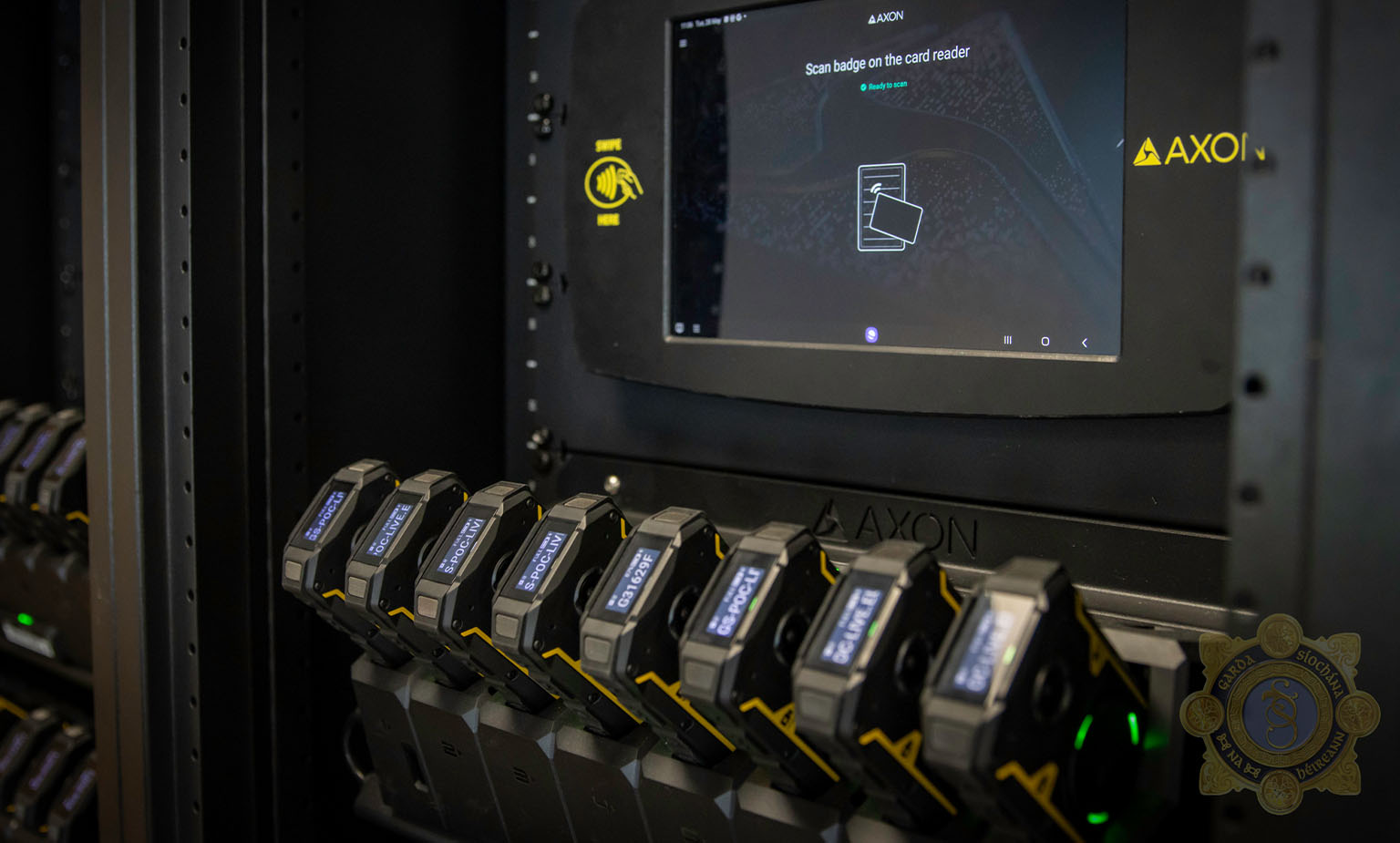
In the Dublin Metropolitan Region Inspector Máiréad Scanlon said they have found BWCs to be effective in dealing with public disorder incidents where it serves to counteract false complaints and helps de-escalate situations.
“We had an incident of public disorder within the DMR where one of the antagonisers jumped onto a Garda car and acted as if he was after being knocked down. The cameras were activated and the 30 second buffer captured the incident as it unfolded, showing his actions,” she says.
This individual then became aggressive with Gardaí and took the keys of their car and threw them away.
“The cameras caught the entire thing – how it unfolded, how volatile it was and how it ignited so quickly. In looking back on the footage what we also found was how much it really highlighted how professional the Gardaí were in that type of situation,” Inspector Scanlon says.
An Garda Síochána is learning from the experience of those participating in the proof of concept, and this feedback is feeding into refinements of the systems and processes being used.
The use of BWCs is covered in the Garda Síochána (Recording Devices) Act 2023, which was signed into law in December 2023, and the Garda Síochána (Recording Devices) Act 2023 (Code of Practice) Order 2024.
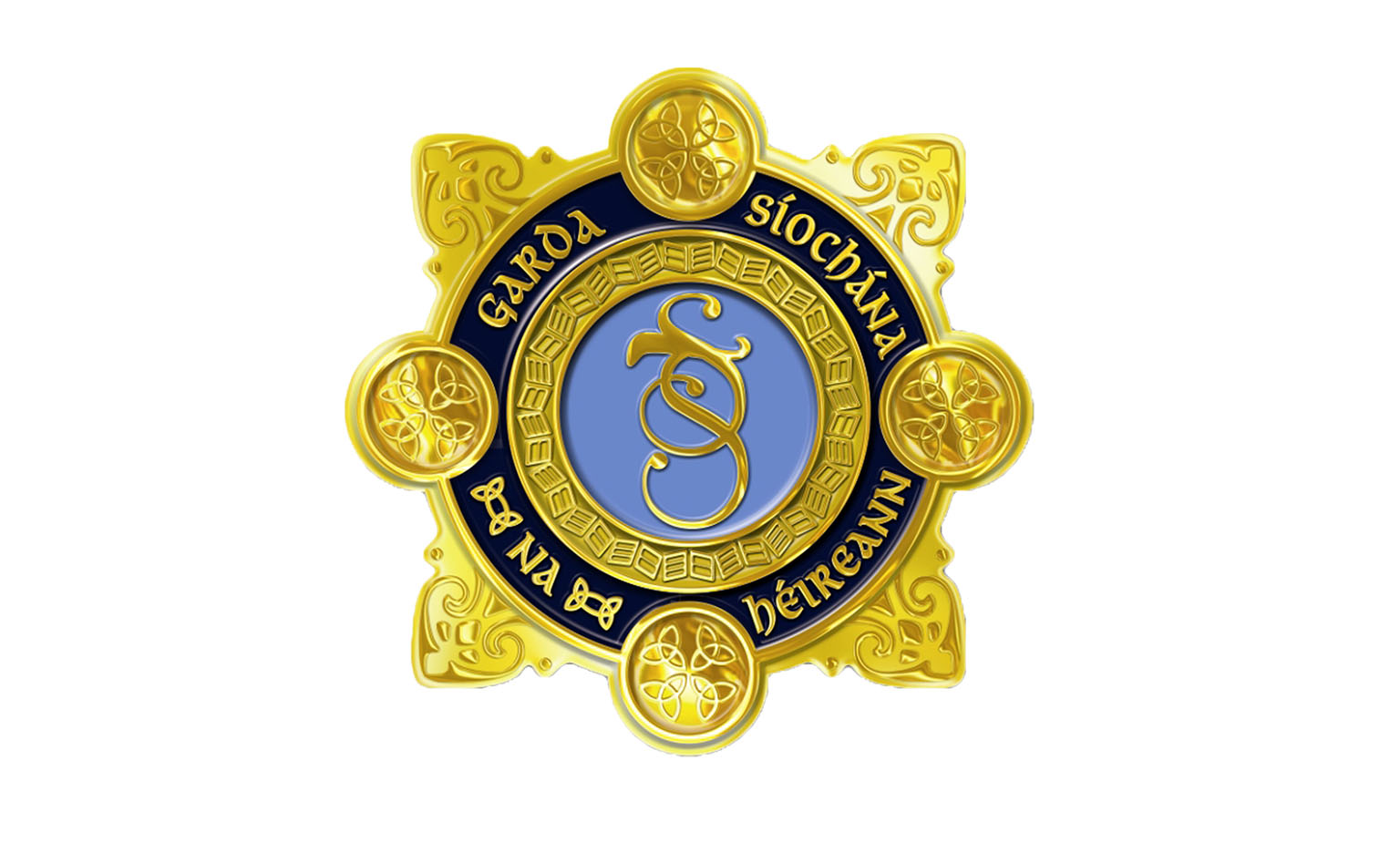
For more information, please visit:
W: www.garda.ie/en/body-worn-cameras

